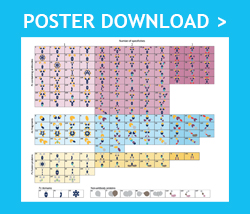Disclaimer: We have done our utmost to ensure that the information provided on this page is accurate. However, it should be noted that values such as half-life and manufacturability are very protein and context specific. The information we have provided on this page should only act as a guide.
- Home
- Reagents
- Overview
- Primary Antibodies
- Overview
- Anti-Allergen Antibodies
- Anti-Coronavirus Antibodies
- Anti-Virus Antibodies
- Antibodies to Epitope Tags
- DNA/RNA Research Antibodies
- Immunotherapy Research Antibodies
- Murine Bispecific Antibody Reagents
- Neuroscience Research Antibodies
- Recombinant Antibodies from Human Patients
- Recombinant Isotype Controls
- Research-Grade Biosimilars
- Tumor Marker Antigens
- VivopureX™ Antibodies for In Vivo Research
- Secondary Antibodies
- Recombinant Proteins
- Services
- Our Technology
- About Us
- Antibody Resource
- News & Events
- How to Order

 United Kingdom (UK)
United Kingdom (UK) 
